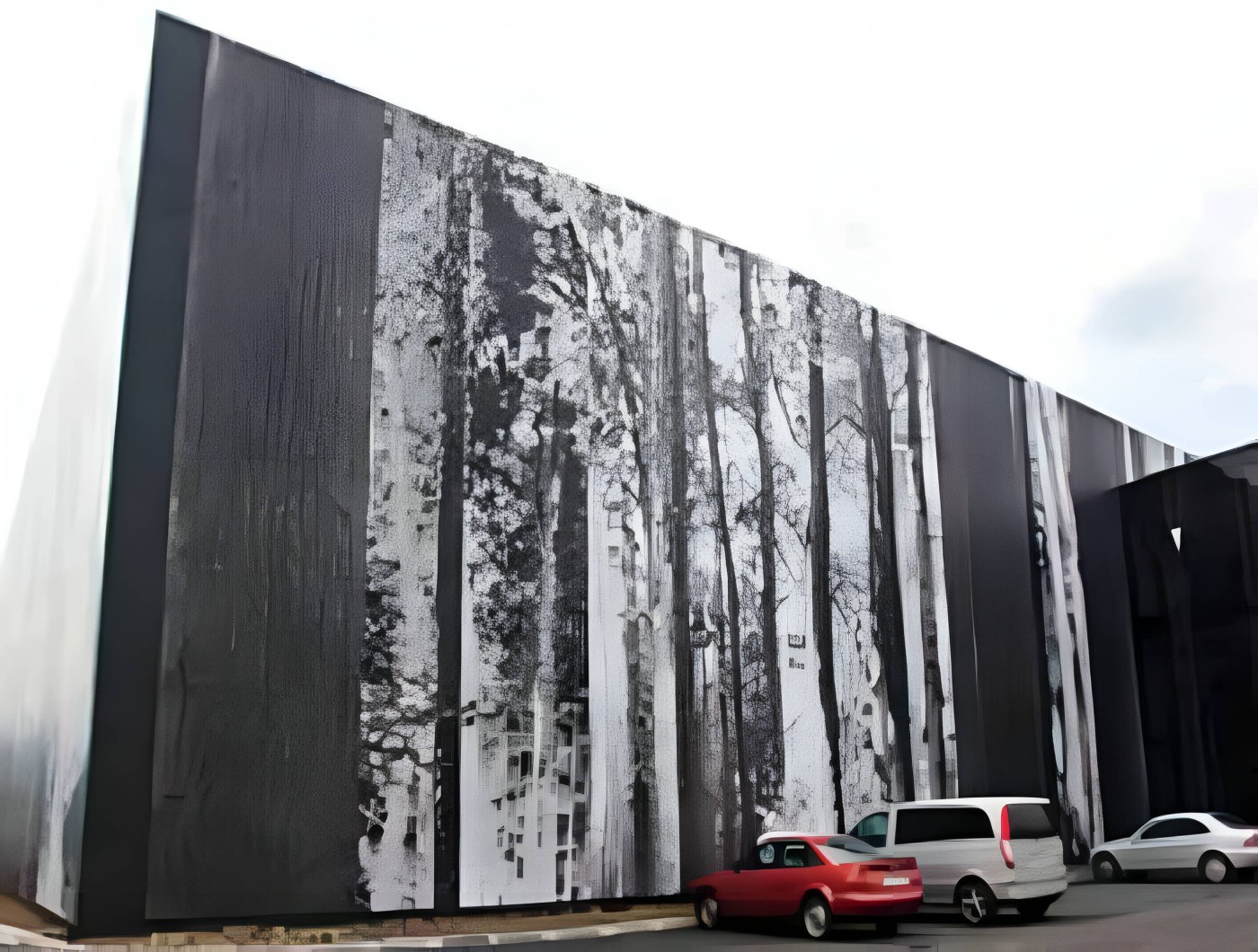Facades have been an integral part of any building shell for the number of tasks they perform to enhance the functionality. From a design standpoint, the faade sets the tone for the rest of the building. The importance of facades has increased in recent times to contribute to sustainability factors. Architects today combine rhythm, proportion and spirit; and balance their designs between performance and aesthetics.
Tracing the Origin
The word faade was derived from the Italian word facciata which means the front of a building. The origin of the faade dates back to 807 BC in Japan where wooden logs were used as the exterior material. Architecture in the earlier days took the vernacular approach and used traditional, local or regional building resources. The concept spread to the world and local materials like clay, wood, lime, stone etc., started being used as exterior materials.
The vernacular architecture involved structures built to meet specific needs, economic conditions, propagate the values and lifestyle of a specific culture; also, it gave importance to geography, local weather conditions, vegetation and topography. The materials used in traditional architecture included local timber logs, mud-earth, bamboo, thatch, stones, to name a few.
In the 16th and 17th centuries, faade designs mainly consisted of decorations, columns, turrets, statues, symmetrical proportions and characters. By the 18th century, the concept of transparent walls with the use of glass as a faade material revolutionized the faade industry. Later, glass clubbed with aluminium slowly became an integral part of the fenestration design.
Evolution in India
In India, facades have always been an important part of structures such as temples and palaces built with all modern scientific functionality. Thick mud walls for good thermal insulation, huge windows and courtyards for natural wind flow, green surroundings, sun path orientation, water bodies etc., made the buildings naturally functional and sustainable
Ancient India bears witness to extensive use of intricate stone carvings, inlay and sculpting on the facets, ingenious use of space, mass and decorations. The influence of Mughals brought about the use of a variety of stones and marbles that can be seen in the mosques, mausoleums, forts and cities from the 15th & 16th centuries.
Consequently, the British, French, Portuguese and Dutch introduced their styles, which can be witnesses in buildings such as schools, churches, railway stations, bungalows from the 17th - 19th centuries. For instance, India, during the British rule saw immense use of natural stones which were smartly designed to match the weather conditions that involved very little to no maintenance.
Facades in India in the 20th century
In the late 1990s, new commercial buildings started using concrete jail screens or exposed RCC. With the inception of new technology, many new facade materials got introduced to the market in the early 2000s, such as ceramic, aluminium/ metal composite materials, structural glazing systems etc.
The last decade has seen a considerable surge in new materials and faade systems. Facades have transformed into more of a functional element rather than purely aesthetic. Many materials like glass, wood composite plastics, tiles, dry cladding systems, sunscreens, aluminium and titanium have provided an opportunity to create diverse styles and ethos.
Latest Developments
Some of the materials from the past find relevance even in the 21st century for their durability, versatility and thermal properties. Natural faade materials like stone and clay have a certain element of timelessness and are still admired for their architectural finesse.
Modern and innovative materials such as exterior grade laminates, fiber reinforced concrete, metal claddings, are creating a healthy disruption in the market. For the cost-conscious Indian market, glass, aluminium, stone wools etc., are extensively being as they are locally available. Few other emerging trends include architectural exposed concrete, fair face concrete, and concrete moulded to the design used for liners made with CNC precision technology. The advent of new materials like glass, Aluminium Composite Panels (ACP) have given a new dimension to the concept of facades.
In India, one of the significant developments in urban construction was the IT boom. In the last few years, these commercial, high-rise buildings have presented innumerable possibilities for designing and usage of new building materials. Even the new-age educational institutions, hospitals, malls and suchlike have been trying to balance between design and aesthetics. With the advent of high-rise residential buildings, cladding systems are steadily getting popular in the residential segment too.
People are slowly becoming more environment-conscious and are opting for sustainable spaces and building materials. Materials like Composite roofing shingles, solar panels, eco-friendly insulation, HPVs, terracotta cladding, ETFE membranes, PET Fiber Reinforced Concrete (FRC), UPVC, cross-laminated timber, bio concrete, self-healing concrete, smart glass which are durable and can reduce the carbon footprint are being preferred.
Moving Ahead
Performance-centric facades are being acclaimed for their ability to drastically reduce energy consumption. Adaptive and environment responsive faade designs and materials have become a global need Factors like solar heat gain, daylighting, and responsiveness to varied climatic conditions are being researched to maximize energy efficiency. The use of cutting-edge technologies is driving new-age materials to be more complex, dynamic and interactive while largely focusing on sustainability and operational cost-effectiveness. While the innovation is on for introducing new materials to the Indian construction market, kinetic and dynamic faade screens, cultivable vertical green screens, Building Integrated Photovoltaics (BIPV) are anticipated to be the next game-changers.

